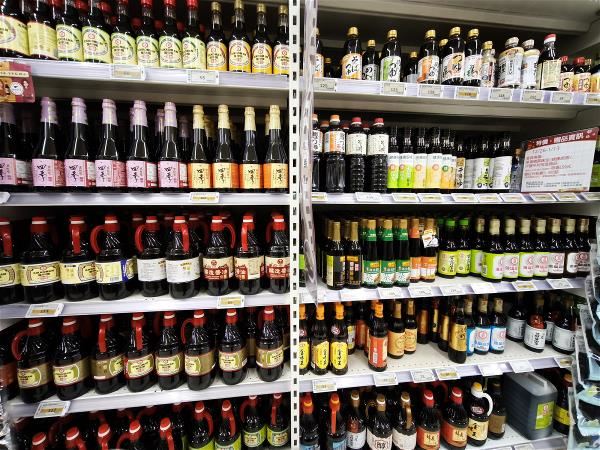2025-3-10
Lynn Su /photo by Jimmy Lin /tr. by Phil Newell
Courtesy of Taiwan Panorama February 2025
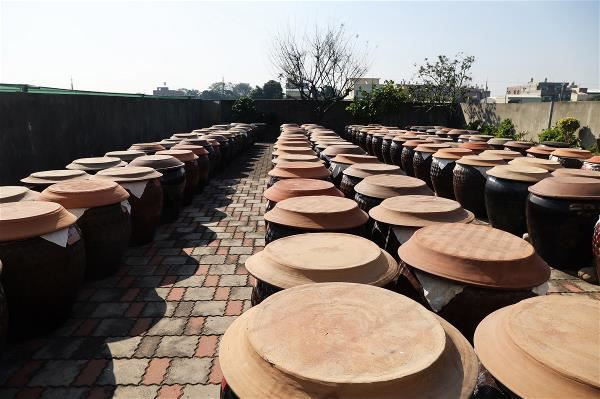
Many Asian countries share a love for soy sauce. The soy sauces in all these countries may well share a common origin, but there are also local differences. What is unique about Taiwanese soy sauce?
Put simply, soy sauce is nothing more than two main raw materials—steamed soybeans and (optionally) roasted wheat—that are mixed together, fermented with kōji mold (various molds of the genus Aspergillus, such as Aspergillus soyae or Aspergillus oryzae), brewed, and cooked. According to historical texts, soy sauce culture in Taiwan can be traced back 400 years, to when immigrants brought Chinese soy sauce brewing techniques to Taiwan.
Culinary writer Yeh Yilan notes that soy sauce is an important liquid condiment that can also be used as a dipping sauce. In Taiwanese cooking, grilled fish, braised tofu, and even boiled green vegetables can be prepared as main dishes with just the addition of soy sauce. Food expert Hsu Zong agrees. He says that if one considers braised pork over rice as Taiwan’s “national rice dish” and beef noodle soup as its “national noodle dish,” in both of these the one indispensable ingredient is soy sauce.
Taiwanese, who are deeply attached to soy sauce, have also developed some alternative ways to consume it. In Southern Taiwan people are in the habit of dipping tomatoes in a blend of soy sauce, minced ginger, and sugar or licorice powder. In recent years avocado served with soy sauce and wasabi has been popular, and people describe its mouthfeel as being like sliced raw fish. There are also bakeries that spread a thin layer of soy sauce on their scallion bread before baking to add fragrance to the product. And don’t forget that the fashion for family barbecues at Mid-Autumn Festival was started by a product promotion campaign from a major soy sauce manufacturer.
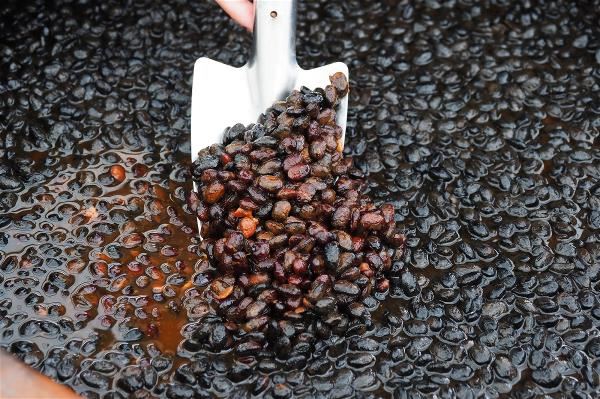
Diverse soy sauces
Initially, soy sauce in Taiwan was made using black soybeans as the main ingredient. In his classic work General History of Taiwan (1921), Lien Heng (1878‡1936) records that people back in the day used black soybeans to make soy sauce, and yellow soybeans to make tofu. This custom only changed during the era of Japanese rule (1895‡1945), when the Japanese introduced soy sauce made with yellow soybeans and wheat as the main ingredients and built a large-scale soy sauce manufacturing operation in Taiwan.
The popularity of the new condiment led to an eclectic mix of soy sauces in Taiwan, with diverse products available. Hsu Zong argues that Taiwanese soy sauces can be divided into four main categories: black bean soy sauce, soybean-and-wheat soy sauce, thick soy sauce (soy sauce thickened with glutenous rice or another starch), and flavored soy sauces.
Although Taiwanese consumers are accustomed to using the same soy sauce for all kinds of cooking, there are still subtle differences between the four types. Black bean soy sauce has a relatively high fat content, making it suited to long periods of stewing or braising, and it becomes more fragrant the longer it is cooked. Soybean-and-wheat soy sauce, meanwhile, has a distinctive delicate aroma due to the small amount of alcohol that the wheat produces at the fermenting stage; however, because the alcohol evaporates at high temperatures, this type of soy sauce is best used in fast stir-frying. As for thick soy sauce and flavored soy sauces, these offer other taste options to suit consumers’ preferences.
At present, there are five major manufacturers of soybean-and-wheat soy sauce in Taiwan: Kimlan, Wei Chuan, Ve Wong, President Kikkoman (a joint venture between Taiwan’s Uni-President and Japan’s Kikkoman), and Wan Ja Shan. In addition, there are still numerous small soy sauce companies all over Taiwan. These include many family firms that have been in business for a century or more and have been passed down through several generations, that mainly supplied soy sauce for their local communities back when transportation of goods was less convenient. These are important behind-the-scenes contributors to distinctive local culinary flavors.
Hsu Zong, who has personally visited more than 70 soy sauce makers around Taiwan and has written a book on the subject, has a rich storehouse of knowledge about the unique soy sauce culture in various places in Taiwan. He notes that in Yilan County, which has a flourishing soy sauce brewing culture with a particular style of its own, there are a large number of small-scale soy sauce making operations. Because the weather in Yilan is humid and chilly year-round, locals take advantage of the period between Dragon Boat Festival and Mid-Autumn Festival, the time of year with the largest number of clear, sunny days, to brew soy sauce. Because the brewing time is brief, at only about a month or so, ultimately they have to rely on the cooking stage to bring out the flavor.
Meanwhile, in Southern Taiwan, where people have long preferred sweeter foods, this preference is likewise expressed in their soy sauce. Employees at Dong Cheng Soy Sauce in Tainan reveal their company’s secret to a good product: “If one spoonful of sugar doesn’t do the trick, then add another.”
We ask why Yunlin County has so many soy sauce producers. Indeed, Yunlin is the location of Xiluo Township, “the home of black bean soy sauce.” Hsu Zong says frankly that in the soy sauce industry, Yunlin is the new kid on the block.
Hsu argues that one of the main reasons that Yunlin has been able to establish itself as an industry leader—besides its oft-mentioned natural endowments of plentiful sunshine and the water of the Zhuoshui River—is that the county is located at the intersection of major northern and southern transportation routes. Before the High Speed Rail and even before the freeways were built, long-distance buses always stopped over in Yunlin. Moreover, the Yunlin County Government has strongly promoted the industry, with Xiluo soy sauce becoming increasingly popular as a souvenir gift item and the reputation of the town’s product spreading like wildfire.
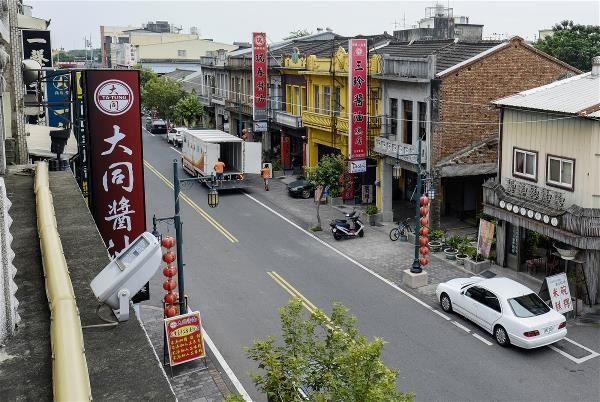
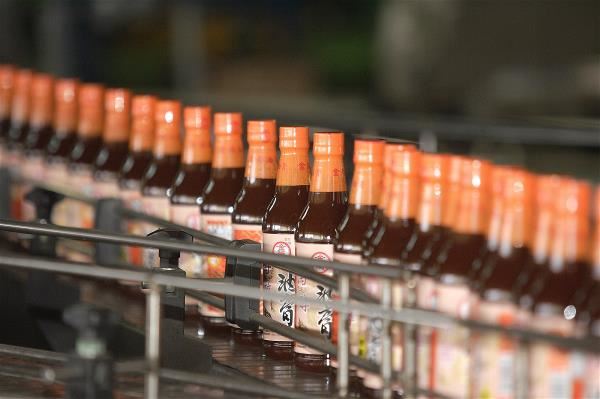
Defining Taiwanese soy sauce
Although soy sauce plays only a supplementary role as a seasoning in cuisine, each location has its own uniquely flavored soy sauce and they can’t just replace each other.
Comparing Taiwanese soy sauce to Japanese soy sauce, the Japanese version has a crisp flavor with a straightforward saltiness, whereas the Taiwanese product has a sedate and steady flavor and often a sweet aftertaste. Hsieh Yi-che, one of the third generation at Yu-Ding-Shing Soy Sauce, offers the following interpretation: “Japanese soy sauce is like green tea, whereas Taiwanese soy sauce is like oolong tea; Japanese soy sauce is like wine, whereas Taiwanese soy sauce is like whiskey.”
Hsieh, who feels a deep sense of mission towards Taiwan’s soy sauce industry, has visited soy sauce makers all over Taiwan and tried to define the essential characteristics of Taiwanese soy sauce. He has come to recognize that although black bean soy sauce (such as his company makes) is a part of the deepest memories of Taiwanese culinary culture, ingredients have diversified, and makers that brew their sauce from yellow soybeans, including Kingdoyou in Neipu, Pingtung County; Hsin Lai Yuan in Budai, Chiayi County; and May-Dong in Dongshi, Taichung City, are also deserving of respect.
Meanwhile Brian Chien, the top man at Royal Jade, another soy sauce producer, tells us that although the continuing popularity of black bean soy sauce in Taiwan stands in marked contrast to neighboring China, Japan, and Southeast Asia, which mainly consume soybean-and-wheat soy sauce, he has discovered that black bean soy sauce is still being made in regions of China where black soybeans are grown, such as Manchuria and Fujian.
Moreover, while it is generally believed that Taiwanese soy sauce takes at least four months to brew, the brewing stage of soy sauces from the Yilan area can be completed in only 21 days, marking another departure from common practice.
When it comes to containers, although brewing vats have traditionally been ceramic, as times have changed a large number of soy sauce manufacturers have switched over to stainless steel, plastic, or fiberglass.
In the end, it is the local terroir and customs that make soy sauces unique, and intense sunshine is today the greatest common factor in the manufacture of traditional Taiwanese soy sauces. Hsieh Yi-che quotes O’Long Black Soybean Soy Sauce’s third-generation vice-president, James Tu: “The character yin [meaning “shade” or “shadow”] in yinyou [an alternative name for soy sauce, usually called jiangyou in Mandarin and tāu-iû in Taiwanese], also means ‘to stew in a covered container’ in Taiwanese, representing the fact that soy sauce is ‘stewed’ under high temperature sunshine.” Hsieh Yi-che, who prefers using the term yinyou (pronounced ìm-iû in Taiwanese) to indicate Taiwanese black bean soy sauce, puts this product in the same category as European olive oil or Japanese miso paste: Domestically, it is a part of our cultural heritage of which we can be proud, while externally it is an important representative of Taiwanese culinary style.


